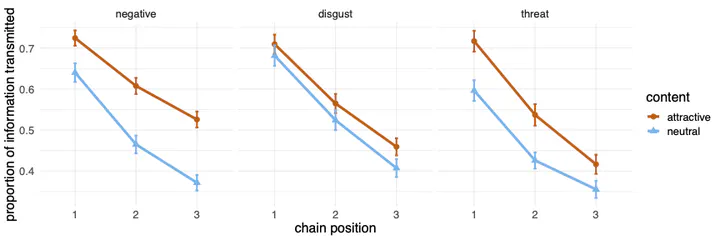From storytelling to Facebook. Content biases when retelling or sharing a story

Abstract
Cultural evolution researchers use transmission chain experiments to investigate which content is more likely to survive when transmitted from one individual to another. These experiments resemble oral storytelling, where individuals need to understand, memorise, and reproduce the content. However, prominent contemporary forms of cultural transmission—think an online sharing—only involve the willingness to transmit the content. Here I present two fully preregistered online experiments that explicitly investigated the differences between these two modalities of transmission. The first experiment (N=1080) examined whether negative content, information eliciting disgust, and threat-related information were better transmitted than their neutral counterpart in a traditional transmission chain set-up. The second experiment (N=1200), used the same material, but participants were asked whether they would share or not the content in two conditions, in a large anonymous social network, or with their friends, in their favourite social network. Negative content was both better transmitted in transmission chain experiments and shared more than its neutral counterpart. Threat-related information was successful in transmission chain experiments but not when sharing, and, finally, information eliciting disgust was not advantaged in either. Overall, the results present a composite picture, suggesting that the interactions between the specific content and the medium of transmission are important and, possibly, that content biases are stronger when memorisation and reproduction are involved in the transmission—like in oral transmission—than when they are not—like in online sharing. Negative content seems to be reliably favored in both modalities of transmission.
Type
Publication
Acerbi, A., (2021), From storytelling to Facebook. Content biases when retelling or sharing a story, Human Nature, 33 (2)